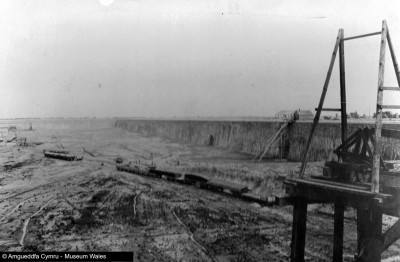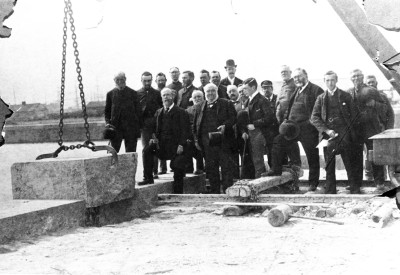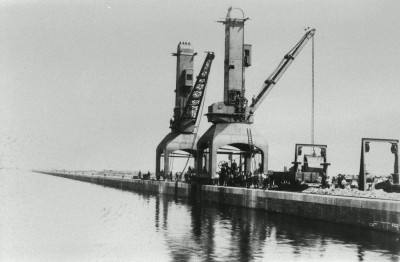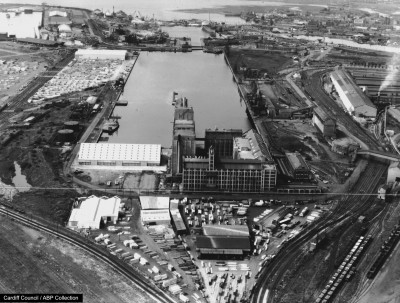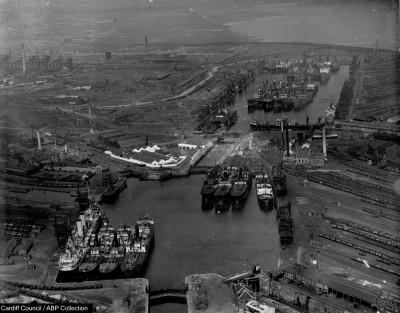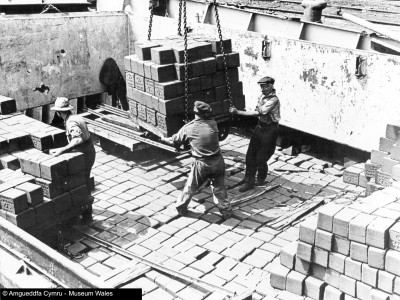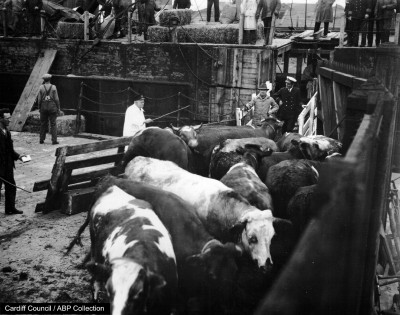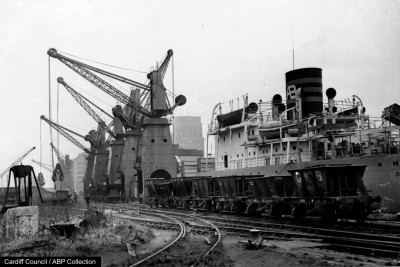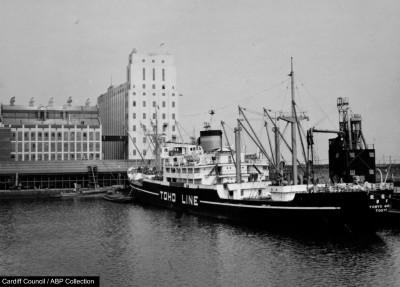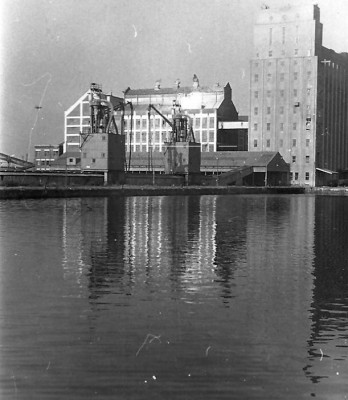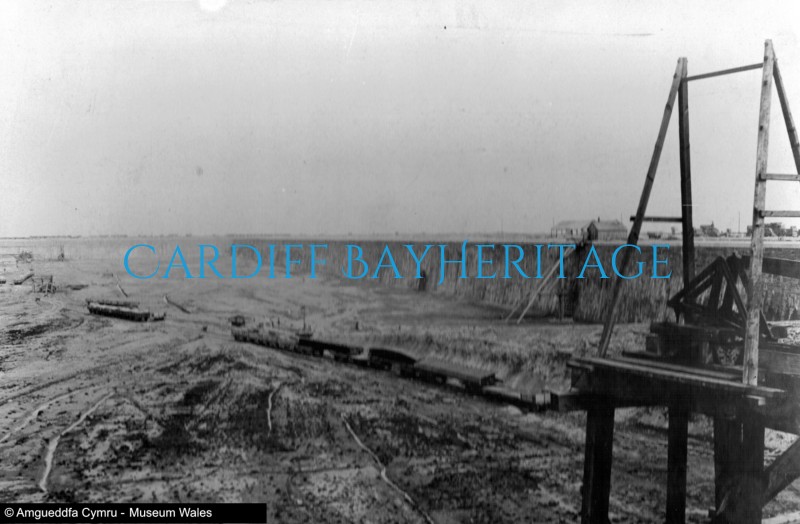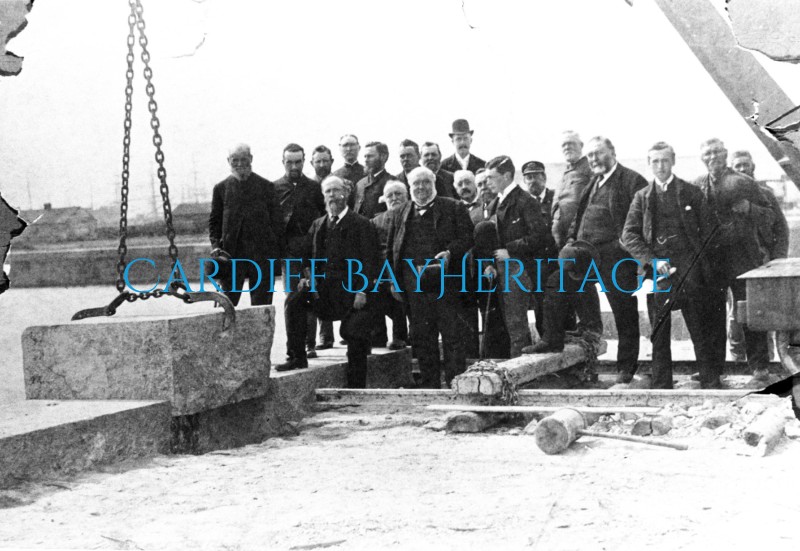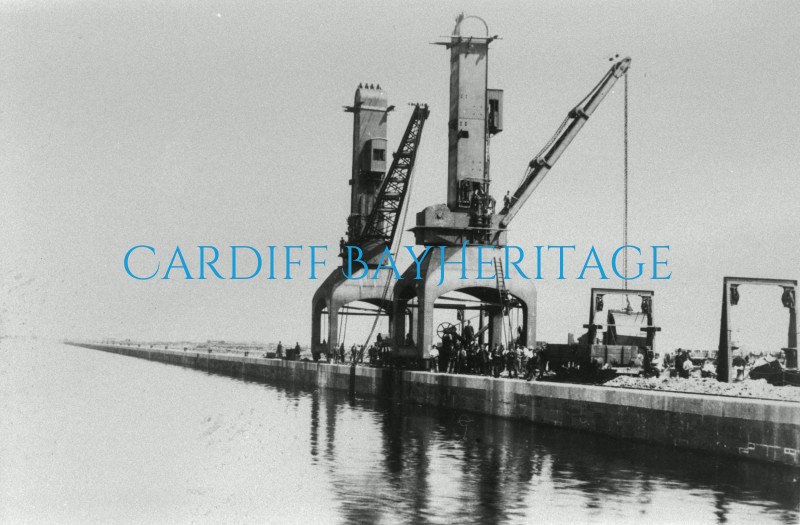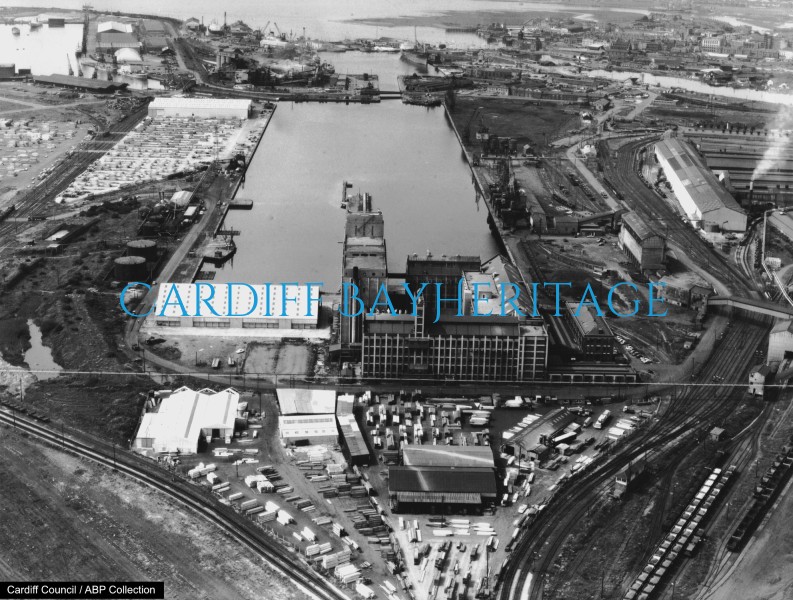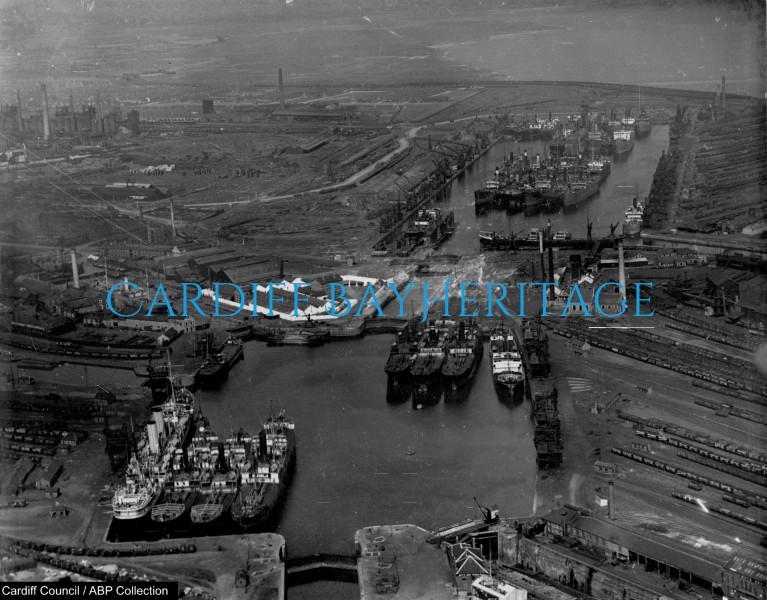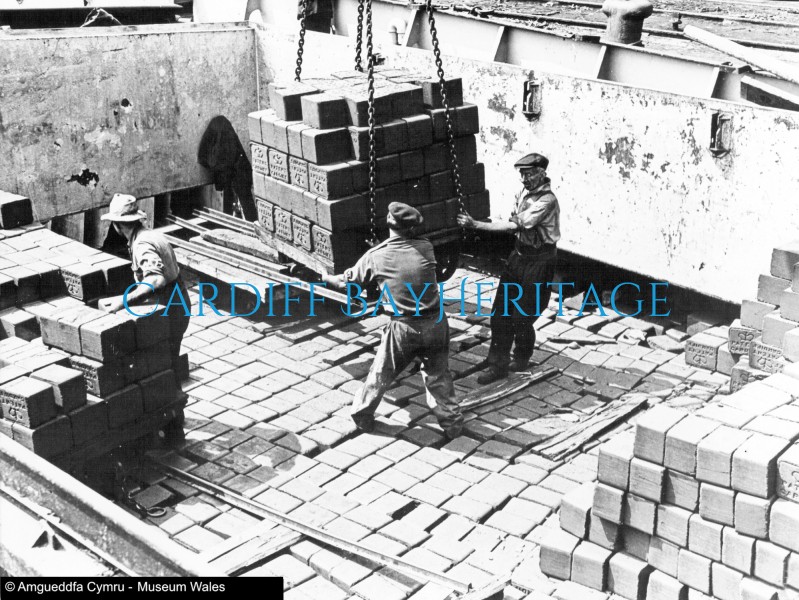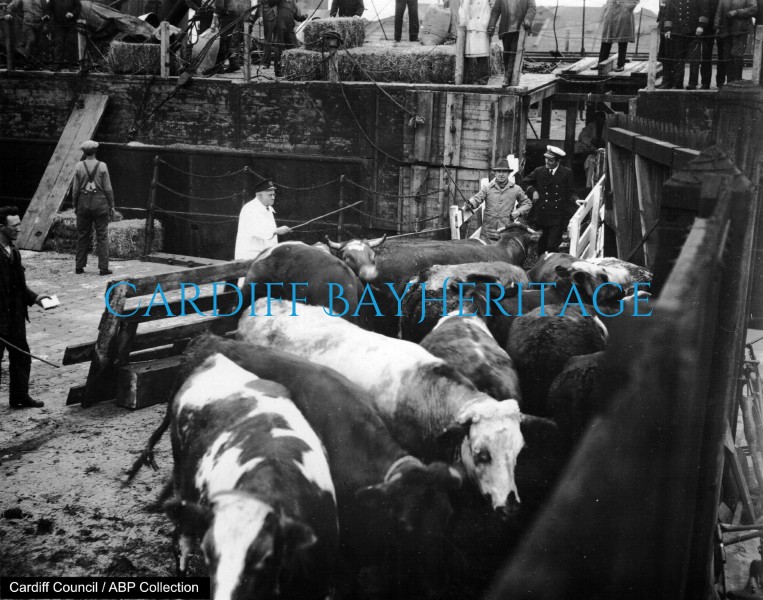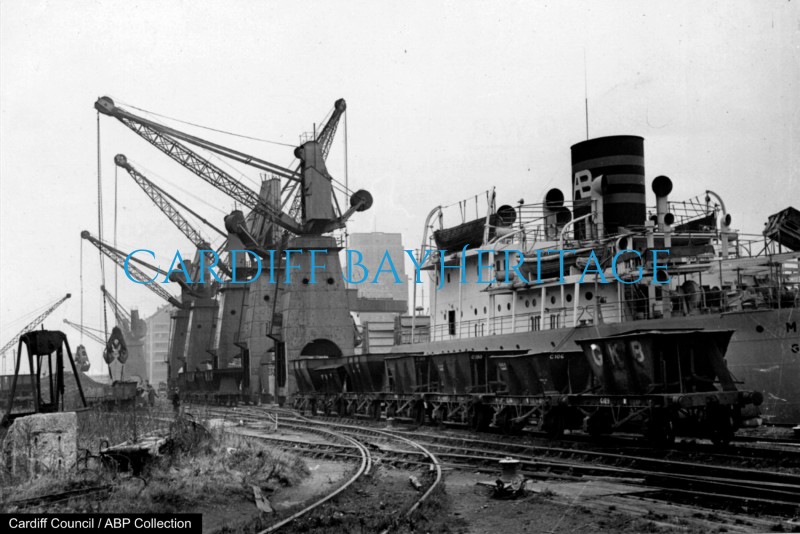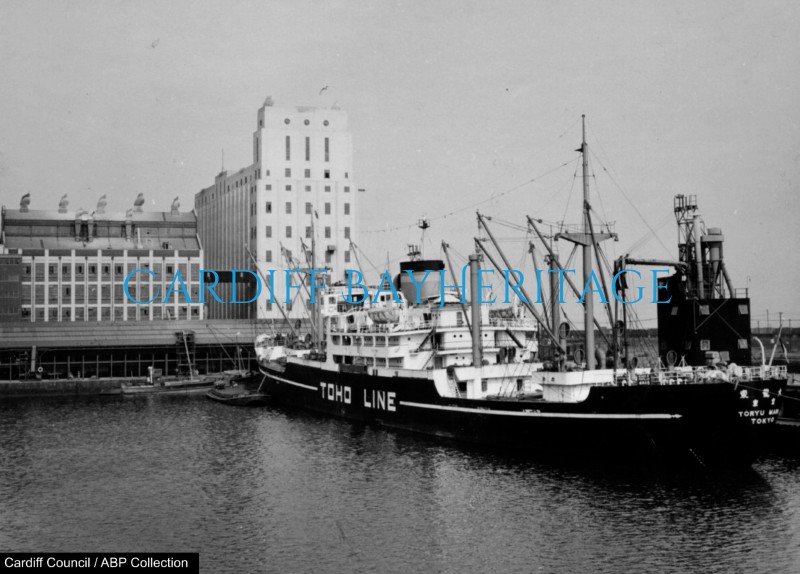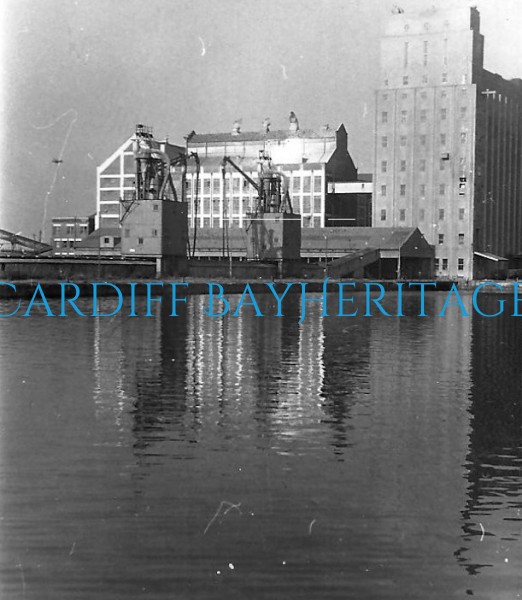
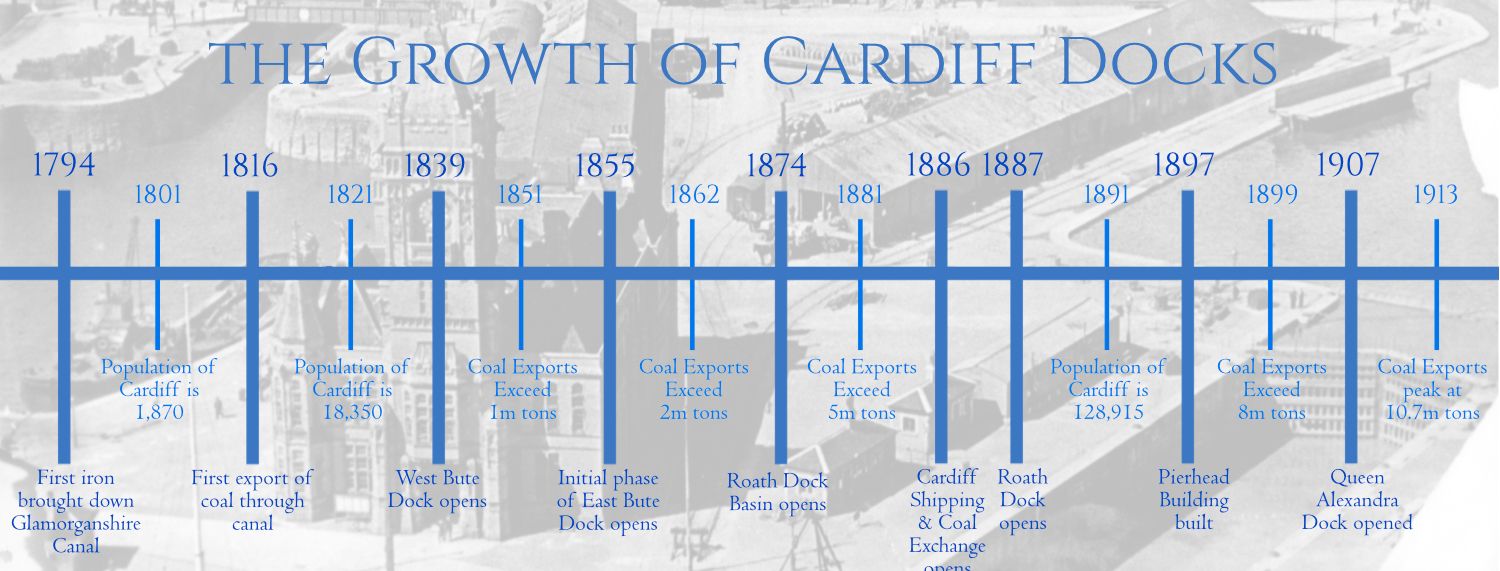
Roath Dock and Basin
Only five years after Bute East Dock had been fully opened the Bute Trustees (the 3rd Marquis was still a minor) had two applications to build more dock capacity turned aside by Parliament.
By 1866 congestion was so bad that vessels were waiting four days to enter the docks and at times this meant that more than 300 ships were waiting offshore. Again Parlimentary powers were sought but only a reduced scheme was sanctioned for the dock basin and low water pier. The pier was opened in 1868 with work on the dock basin continiung until the summer of 1874. A dry dock was included in the work as well as the Junction Lock connecting through to Bute East Dock. A second dry dock was added later.
Roath Basin is 1000 feet long and 525 feet wide covering 12 acres. The sea lock was 80 feet wide and able to accommodate the largest vessels of that time.
Even before the Basin was opened, Parliament approved a scheme for the linked Roath Dock.
Work on this was delayed by a dispute with the railway companies. Work was commenced in 1883 by the Marquis himself and the dock opened in 1887.
Roath Dock is 2400 feet long and 600 feet wide covering 33 acres.
The complex was intended to handle imports as well as the ever growing export of coal.
A lairage handled the import and export of livestock and Crown Patent Fuel works supplied vessels including SS Terra Nova on its way with Captain Scott to the Antarctic.
-
011 0002
A very early photograph of work to excavate the dock. Llun cynnar iawn o waith i gloddio'r doc. -
001 1712
Party of officials laying the final stone to complete building of the dock. Parti swyddogion yn gosod y garreg olaf i gwblhau adeiladu'r doc. -
002 2134
Opening of Roath Dock with two newly developed Lewis Hunter cranes. Agor Doc y Rhath gyda dau graen Lewis Hunter newydd. -
301 6200
Aerial view of Roath dock
The Spillers flour mill and jetty can be seen in the foreground.Llun o'r awyr o ddoc y Rhath
Gellir gweld melin flawd Spillers a jeti yn y blaendir. -
307 1000
Photo dates from the 1920's when there were lots of laid up ships.
To the left of the lock between the Basin and the Dock is the livestock lairage and to the right the Crown Patent Fuel works.Llun yn dyddio o'r 1920au pan roedd llawer o’r llongau’n segur.
I'r chwith o'r loc rhwng y Basn a'r Doc mae'r llociau da byw, ac i'r dde mae gweithfeydd Crown Patent Fuel. -
011 0007
At the Crown Works patent fuel was manufactured by mixing and heating waste coal with pitch. It was moulded into blocks which could be stacked and take up less space than coal.
300 tons from the Crown Works on Roath Dock was loaded onto Terra Nova for Captain Scott's trip to Antarctica.Yn Crown Works, roedd peli glo yn cael eu cynhyrchu drwy gymysgu a gwresogi glo gwastraff â phitsh. Roeddent yn cael eu mowldio'n flociau y gellid eu pentyrru, a fyddai’n cymryd llai o le na glo.
Llwythwyd 300 tunnell o’r Crown Works yn Noc y Rhath ar y Terra Nova ar gyfer taith Capten Scott i Antarctica. -
301 6237
Cattle on their way to the lairage beside the dock. Gwartheg ar eu ffordd i'r llociau da byw wrth ochr y doc. -
301 6230
Unloading Iron Ore. The Dowlais Wharf was adjacent to the steel works. Dadlwytho mwyn haearn. Roedd Glanfa Dowlais ger y gwaith dur. -
301 6240
Unloading at Spillers Jetty. This Japanese ship is unloading grain by way of the suction plant on the jetty. Dadlwytho yn Jeti Spillers. Mae'r llong Siapaneaidd hon yn dadlwytho grawn trwy’r peiriannau sugno ar y jeti. -
012 0003
Spillers commenced operating from premises on Bute East Dock making ships biscuits. The grain silo and mill, here on Roath Dock, was erected in the 1930's and went on to produce dogs' biscuits.
The jetty has suction equipment to transfer the grain from the hold of ships to the silo.Dechreuodd Spillers weithredu o safle ar Ddoc Dwyreiniol Bute yn gwneud bisgedi caled (neu fisgedi llongwyr). Codwyd y seilo grawn a'r felin ar Ddoc y Rhath yn y 1930au, a newidiodd cyfeiriad ymhen tipyn i gynhyrchu bisgedi cŵn.
Mae gan y jeti offer sugno i drosglwyddo'r grawn o storfeydd llongau i'r seilo.
